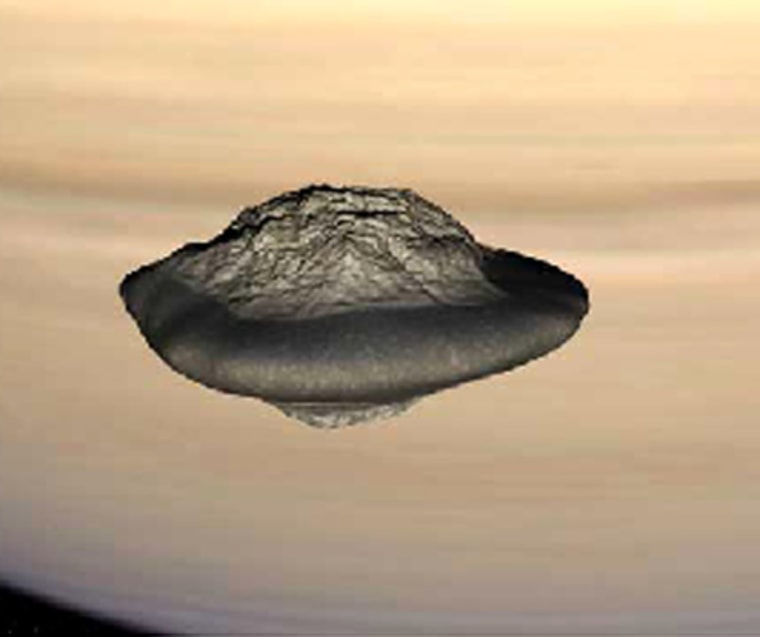The rings of Saturn might have given birth to the giant planet's odd, small moons, scientists now reveal.
These unusual moons, some of which resemble flying saucers, might have clumped together from the bits of ice and dust that make up Saturn's majestic bands.
The large moons that orbit the giant planets are thought to have finished forming roughly about when their hosts did, some 4.5 billion years ago. (Photos: Saturn's rings and moons.)
However, calculations of the orbits of five small moons of Saturn that gather just within and beyond the periphery of the planet's main bright rings revealed they are far too young for this to have been the case. These must be less than 10 million years old — for instance, they have bright, nearly pure ice surfaces largely unmarred by the impacts expected from meteoroids.
"There are still new objects forming in the solar system today," said planetary scientist Sebastien Charnoz at the Universite Paris Diderot in France. "We used to think everything was formed four, five billion years ago, but no! New objects are still forming today."
Another curious detail about these moonlets is their low density overall — less than two-thirds that of body fat. This suggested they mysteriously contained significant empty pockets inside.
Moons born from rings
One possibility for the origin of these baby moons is that they were the offspring of Saturn's rings. Until recently, however, scientists did not have enough computing power to model how this process might have occurred.
Now using simulations analyzing the interplay between Saturn and its rings and moons, Charnoz and his colleagues suggest these bizarre moons first grew from particles gravitationally attracted together in the rings' outskirts, beyond the distance where the planet's gravity stabilizes the rings. These loosely clumped moonlets were then flung outward with the help of the pull that Saturn and the rings exerted on them.
"The rings and the moonlets are in fact a single system," Charnoz told SPACE.com. "They appear different but they are simply the different portions of a same system. The moonlets are born from the rings, and they transform the ring in return through gravitational interaction."
"This tells us that there are different ways to form solar system bodies," he added. "It tells us also that giant planets' environment are much more dynamic than previously thought and that we have still a lot of things to learn."
Charnoz and his colleagues detailed their findings in the July 10 issue of the journal Nature.
Moons of Saturn, Earth and more?
The new simulations of Saturn's rings and moons may also have implications for the evolution of planets and their moons in general — including the Earth's moon.
"This is theoretical support for the growing view about how there's an intimate connection between disks and embedded bodies," said planetary scientist Joseph Burns at Cornell University, who did not take part in this study. "These satellites might have been born recently, meaning that the system is evolving in some sense right before our eyes, although one would have to stay alive for some time to see real change."
If we want to understand the origin of Saturn's rings, "which is still a mystery, we have to investigate the moons," Charnoz explained. "This is a supplementary clue for their origin."
Also, "is this new mechanism general enough to form all the icy moons of Saturn, like Enceladus, Mimas?" Charnoz asked. "We have no clue but this definitely deserves to be studied. What would be very interesting is to know the internal structure of Saturn's satellites, but there are very few clues. Maybe Cassini or future space missions will tell us."
Moving beyond Saturn, this process of moon formation could shed light on Earth's moon.
"Its formation process is very similar to what we describe for Saturn's moon, but the moon would have accreted from the protolunar disks," Charnoz said. "First tests have shown that our model reproduces the moon accretion from the protolunar disks in five minutes computer time."
Moreover, "we want to compute the chemical composition of the proto-moon while it was forming," he explained.
"This is a longstanding problem in astronomy as we still do not understand fully why the moon seems to have the same oxygen composition of Earth and at the same time so little water and so little iron."
